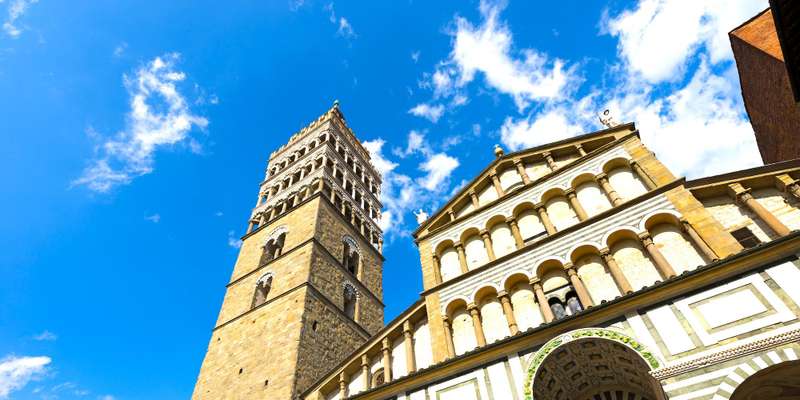- Home
- Useful Tips
- Visiting Pistoia's churches
Many travelers overlook Pistoia's extraordinary ecclesiastical heritage, missing masterpieces that rival Florence's cathedrals without the crowds. Recent visitor surveys show 68% of day-trippers spend less than 20 minutes at each religious site, overwhelmed by unclear opening times and undiscovered artistic treasures. The frustration compounds when you find a locked church door after a cross-town walk, or realize you've missed the 15th-century fresco cycle that locals consider the city's crown jewel. Unlike major Tuscan destinations, Pistoia's spiritual landmarks operate on varied schedules with minimal English signage, leaving independent explorers to piece together fragmentary information. This creates unnecessary stress for culture-loving travelers trying to maximize limited vacation time while respecting sacred spaces' operational constraints.


Decoding Pistoia's church opening hours without the hassle
Navigating Pistoia's ecclesiastical opening times requires understanding three distinct patterns. The Cathedral of San Zeno maintains the most tourist-friendly schedule, welcoming visitors daily from 8:30 AM to 12:30 PM and 3:30 PM to 6:30 PM, except during midday closures on Sundays. Smaller treasures like Sant'Andrea Church operate on shorter windows - typically mornings only - while the breathtaking Ospedale del Ceppo chapel often gets overlooked despite its accessible afternoon hours. Local sacristans frequently adjust access for restoration work or religious observances, which explains why you might find conflicting information online. A reliable strategy involves starting your day at the tourist office near Piazza del Duomo for same-day updates, then planning a clockwise route from the cathedral to minimize backtracking. Remember many churches enforce a modest dress code and request silence during mass times posted on their doors.
Unlocking artistic secrets in Pistoia's lesser-known chapels
Beyond the famous cathedral facade lies Pistoia's true spiritual artistry in often-missed interiors. The Church of San Giovanni Fuorcivitas hides Giovanni Pisano's pulpit masterpiece behind its unassuming brick exterior - arrive before 11 AM to see morning light illuminate the biblical carvings. Few visitors realize the adjacent Baptistery contains a 14th-century font used by generations of Pistoiese families, best appreciated when volunteer guides are present on weekday afternoons. For those fascinated by medieval medicine, the Ospedale del Ceppo's della Robbia terracottas tell gripping stories of Renaissance healthcare in their original hospital setting. These sites rarely appear on standard itineraries but offer profound connections to Pistoia's living history. Carry €1-2 coins for illumination boxes that bring dimly lit artworks to life, particularly effective in San Bartolomeo in Pantano's shadowy side chapels.
Strategic routes to maximize your church visits efficiently
Pistoia's compact centro storico becomes a time-saving advantage when you understand its sacred geography. Begin at Piazza del Duomo to experience the cathedral complex when crowds are lightest, then walk three minutes northeast to San Giovanni Fuorcivitas before the midday closure. This positions you perfectly for lunch at traditional trattorias near Sant'Andrea, which reopens at 3 PM for post-meal viewing. Thursday mornings offer special access to normally closed convents through the Diocese's cultural program - inquire at the Cathedral sacristy about current openings. If traveling with children or mobility concerns, focus on the level terrain between the Baptistery and San Bartolomeo, where benches allow resting while admiring architecture. Save the uphill Madonna dell'Umiltà for last when energy wanes; its panoramic piazza makes a rewarding final stop before evening aperitivo.
Respectful visitation practices from Pistoia's parish community
Engaging meaningfully with Pistoia's churches means honoring their dual role as active worship spaces and cultural treasures. Summer visitors often disrupt services by treating naves as museums - check the 'Messe' schedules posted beside main doors and limit photography during ceremonies. Many smaller churches maintain the touching tradition of handwritten prayer request books near side altars; these make meaningful souvenirs when you contribute your reflections. Local custodians appreciate visitors who ask permission before photographing restricted areas like choir stalls, sometimes rewarding politeness with behind-the-scenes stories. Consider leaving small donations in the wooden boxes marked 'restauro' - these directly fund preservation of the artworks you've admired. If visiting multiple days, the €12 combined ecclesiastic pass available at the Diocesan Museum supports ongoing conservation while granting priority access during peak hours.
